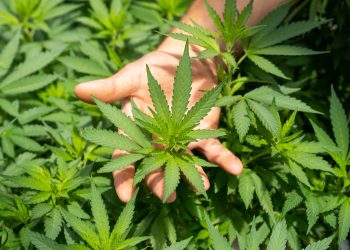Living with chronic pain is far from easy. It takes and takes, wearing you down a little bit every day. Add in the issue that our bodies will build a tolerance to pain killers over time, and you start to see an issue. The opiate crisis we are currently experiencing began with a prescription more often than not.
That’s why more people are looking to holistic alternatives to supplement their prescription. Diversifying your pain management strategy is smart and effective. Just as you should use physical therapies to help ease pain and increase blood flow, you should also consider trying alternative supplements, like CBD oil.
This guide will help you understand what CBD is, and just how it can possibly help with injury and chronic pain alike:
What is CBD?
Contents
CBD is the short form of cannabidiol, which is an extraction from the cannabis plant. Just like many plants, cannabis comes in many strands. The type that CBD is extracted from is hemp, which has the lowest amounts of THC (the active compound in marijuana). Hemp is also used as a textile.
Is CBD Safe?
CBD is not classed as a Schedule I drug and can be bought without a prescription in many countries. There have been no reported safety concerns for those taking CBD in moderate doses, though it may cause some drowsiness.
CBD and Pain Relief
People have used CBD for pain relief for generations as many believe it has both anti-inflammatory and pain-relieving properties. The full effectiveness of CBD, however, is still uncertain. There are large studies being conducted to better understand CBD and its benefits and until they’re released the full range of benefits is uncertain. Trying out CBD for yourself and seeing how you feel and if it’s right for you is, at the moment, the best course of action.
Types of CBD
There are many CBD products that you can try. The right one for you will depend on your personal preference, and which type of product you personally feel works the best. There are also varying dosages of CBD within a product, so once you have found the product you like, try to see which dose is most appropriate for you.
· Edible CBD
One of the most popular ways that CBD is consumed is as an edible. You can buy gummies or oil. Gummies can be eaten whenever you want, while oil can be taken in several ways. You can place a few drops of CBD oil under your tongue, for example, or mix it with a drink or in your food. CBD-drinks are a popular option in many cafes today for this very reason. When consuming CBD this way, do keep in mind that it first needs to be absorbed through your digestive track, which can take between one to two hours.
· Topical CBD
The other way to use CBD is in a lotion or balm. Many CBD lotions may contain additional ingredients to help with pain relief, but this will depend on the product. With topical CBD products, you’ll want to rub the lotion directly into the skin. This method is popular with those who have joint pain like arthritis, and are looking to expand their pain relief options with wellness supplements.
How Much CBD is Necessary?
To start with, you’ll want to use just a few milligrams of CBD twice per day. You can increase the dosage depending on your needs and preferences. Starting low and letting yourself acclimate to the dosage is necessary to find the right dosage for you. As the product is a wellness supplement, there won’t be hard and fast rules about how much you should take.
What if I Don’t Feel Anything?
Some people find that CBD is a great pain reliever and helps them manage any inflamed joints or injuries. Others, however, won’t experience anything. If, after a few weeks, you don’t notice a difference, then CBD probably isn’t for you. If you started with a lotion, then you may fare better with the oil.
At the end of the day whether you should continue with CBD depends on personal preference. If you personally experience benefits, then continue. If you don’t get the hype, then take your time finding other holistic measures to balance out your pain management strategy.
Even with CBD you’ll also want to look into additional treatments. Work with your doctor if you have chronic pain to create a rounded approach that uses a range of treatments from medical to holistic to help you lead a well, fulfilling life either pain-free or with your pain properly managed. You should always check with your doctor if you are on other medication as it may be that CBD or other supplements interfere with your normal medication.










